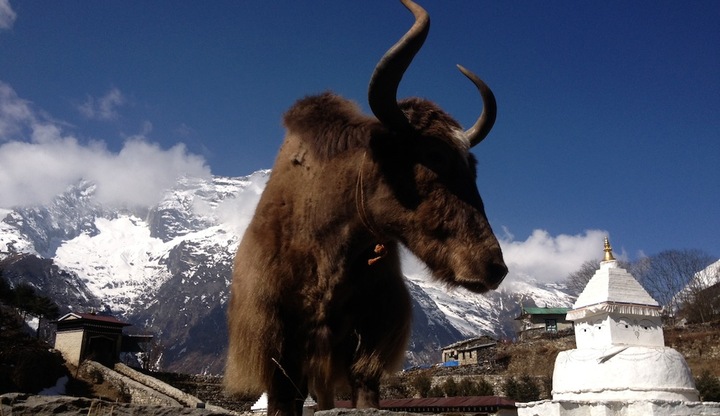Yak Facts & Figures
Some interesting Yak facts and figures:
- Yaks possess great lung capacity so they can absorb more oxygen. Their digestive system is also designed to keep them warm
- Yaks are highly appreciated because of their fur, fatty milk, meat and dung (which is used as a fuel).
- The body of yak is covered with thick, woolly coat. It can be brown, black or white in color. Main purpose of the fur is preservation of body heat and protection against low outer temperatures. Thanks to the fur, wild yaks can survive temperature of -40 degrees of Celsius during the winter. They are also able to swim in the nearly frozen waters without disturbing their normal body temperature
- It took 273 Yak trips to get all of the Xtreme Everest kit to Everest Base Camp in 2013
- Yaks have long, bushy tails which are used for the production of fake beards in certain Chinese theaters
- During the winter, yaks use their long horns to shovel through the snow in order to find plants located beneath it. Their horns are also used for the protection against the predators such as Tibetan wolves
- The hooves of yaks are split, which help them to facilitate movement across the rocky and icy terrains which are found in Nepal and on the way up to Everest base camp.
- Yaks live in herds of 10 to 100 animals that are composed of large number of females and several males
- In parts of Tibet and Karakorum ‘Yak Racing’ is prevalent at traditional festivals





